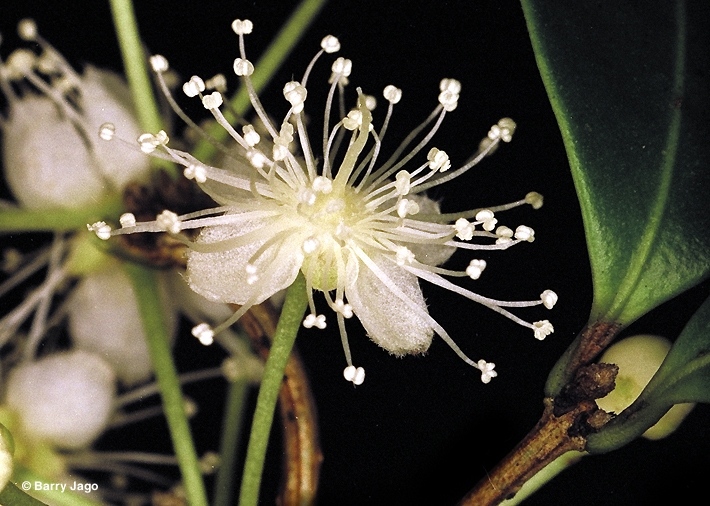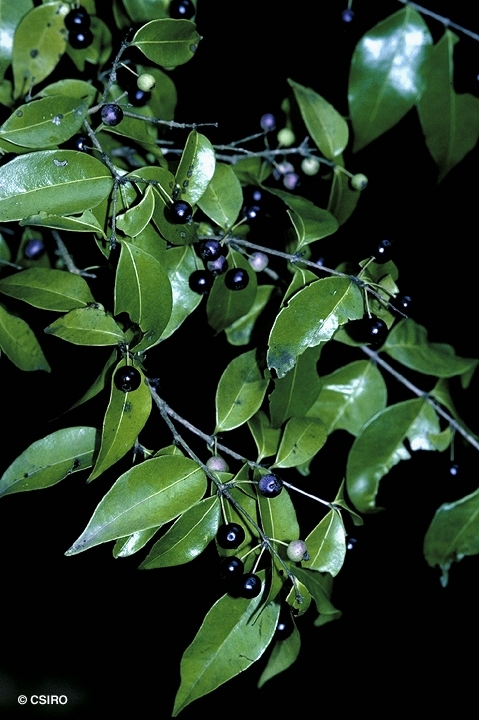Australian Tropical Rainforest Plants - Online edition
Gossia floribunda (A.J.Scott) N.Snow & Guymer







Snow, N. & Guymer, G.P. (2003) Sustematic Botany Monographs 65: 72.
Cape Ironwood; Lignum
Cotyledons ovate to elliptic, about 10-18 x 4-5 mm; stipules present. Intramarginal vein present. Oil dots very small, visible with a lens. At the tenth leaf stage: leaf blade elliptic, midrib distinctly raised on the upper surface. Stem longitudinally ribbed at least near the apex. Seed germination time 6 to 23 days.
Occurs in CYP and NEQ. Altitudinal range from sea level to 200 m. Grows as an understory tree in a variety of forest types including gallery forest, monsoon forest, dry rain forest and beach forest. Also occurs in New Guinea.
A smooth barked shrub or small tree deserving a place in tropical gardens. The small white flowers are produced in abundance.





